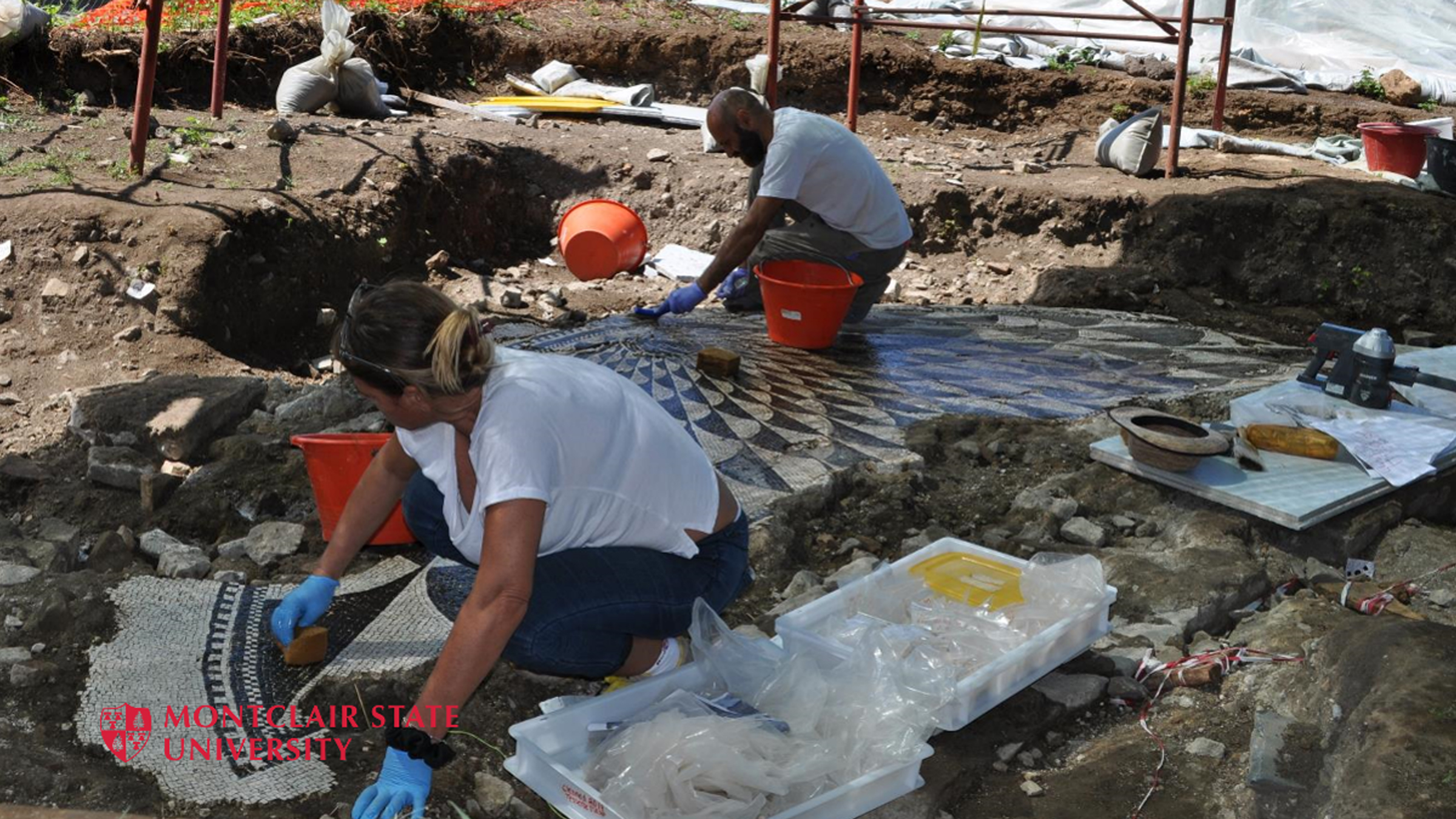Mysterious mosaics depicting Medusa uncovered at 2nd-century Roman villa
Two Roman-era mosaics depicting the snake-haired mythological figure Medusa were unearthed at the Villa of the Antonines in Italy.

While excavating a villa used by ancient Roman emperors in Italy, archaeologists uncovered something unexpected: two mosaics that depict the Greek mythological figure Medusa, whose hair was made of snakes and whose gaze was said could turn people into stone.
The team found the mosaics in a circular room in the Villa of the Antonines, so called because it was used by members of the Antonine dynasty who ruled the Roman Empire from A.D. 138 to 193. The mosaics likely date to the second century A.D. the researchers said at a presentation at the annual meeting of the Archaeological Institute of America, which was held in New Orleans in January.
In both mosaics, Medusa is looking off into the distance, perhaps leaving observers to wonder, "What are these ladies thinking?" Timothy Renner, a professor of classics and general humanities at Montclair State University in New Jersey and co-director of the team that is excavating the site, said during the presentation.
The team found the Medusa mosaics within two niches cut into a circular room at the villa — one in the northwest part of the room and another in the southeast part. The room had two other niches, but no mosaic remains were found in them.
Related: 50 graves of slaves who toiled at a Roman villa unearthed in England
It's still a mystery what this room was used for and why it contained Medusa mosaics. However, it "definitely must have been quite impressive to enter the room," Deborah Chatr Aryamontri, an associate professor of classics and general humanities at Montclair State University and co-director of the team, said during an interview with Live Science, noting that the room is around 69 feet (21 meters) in diameter.
"Finding those mosaics [was] a pleasant surprise," Chatr Aryamontri said, noting that many of the villa's most impressive decorations were removed during the 18th and 19th centuries.
Sign up for the Live Science daily newsletter now
Get the world’s most fascinating discoveries delivered straight to your inbox.
In the second century, Medusa heads were popular decorative features in the Roman world, the researchers said. It's not certain if the villa's owners ordered them specifically or whether they were created on the whim of the artist who worked on the room.
The Antonine dynasty ruled the Roman Empire between the reigns of Emperors Antoninus Pius (reign A.D. 138-161) and Commodus (reign A.D. 177-192) The villa is immense and even has what appears to have been an amphitheater used by Emperor Commodus for gladiator practice and the killing of wild beasts. (Commodus sometimes participated in gladiator fights.)
The circular room appears to be in an area where people resided in the villa. One possibility is that it was a reception room. Chatr Aryamontri and Renner told Live Science that this is uncertain and they are not even sure if the circular room had a roof.
Site disturbance
One challenge for modern archaeologists is that there is a large amount of damage and disturbance at the site. In the past, the area where the villa is located in Italy was looted and used for dumping. Also, during World War II, the site was in a strategic location that saw considerable movement of troops. "We actually find some World War II artifacts" during excavation of the villa, Chatr Aryamontri said.
A photograph of the area taken in the early 20th century shows Roman concrete walls that are above ground, but they have since suffered damage or are now destroyed, Renner said.
A small portion of the circular room with mosaics was first found in 2014, and excavation and analysis have continued since then. The team hopes to help create an archaeological park at the villa's location someday.

Owen Jarus is a regular contributor to Live Science who writes about archaeology and humans' past. He has also written for The Independent (UK), The Canadian Press (CP) and The Associated Press (AP), among others. Owen has a bachelor of arts degree from the University of Toronto and a journalism degree from Ryerson University.










